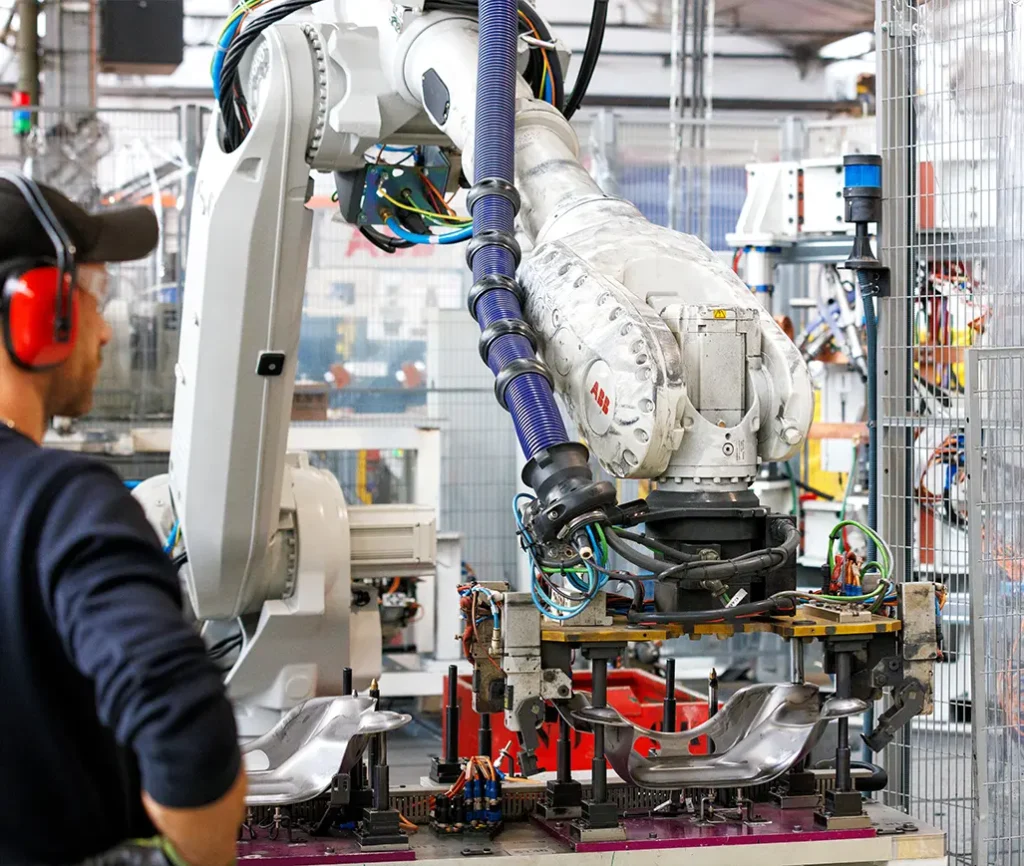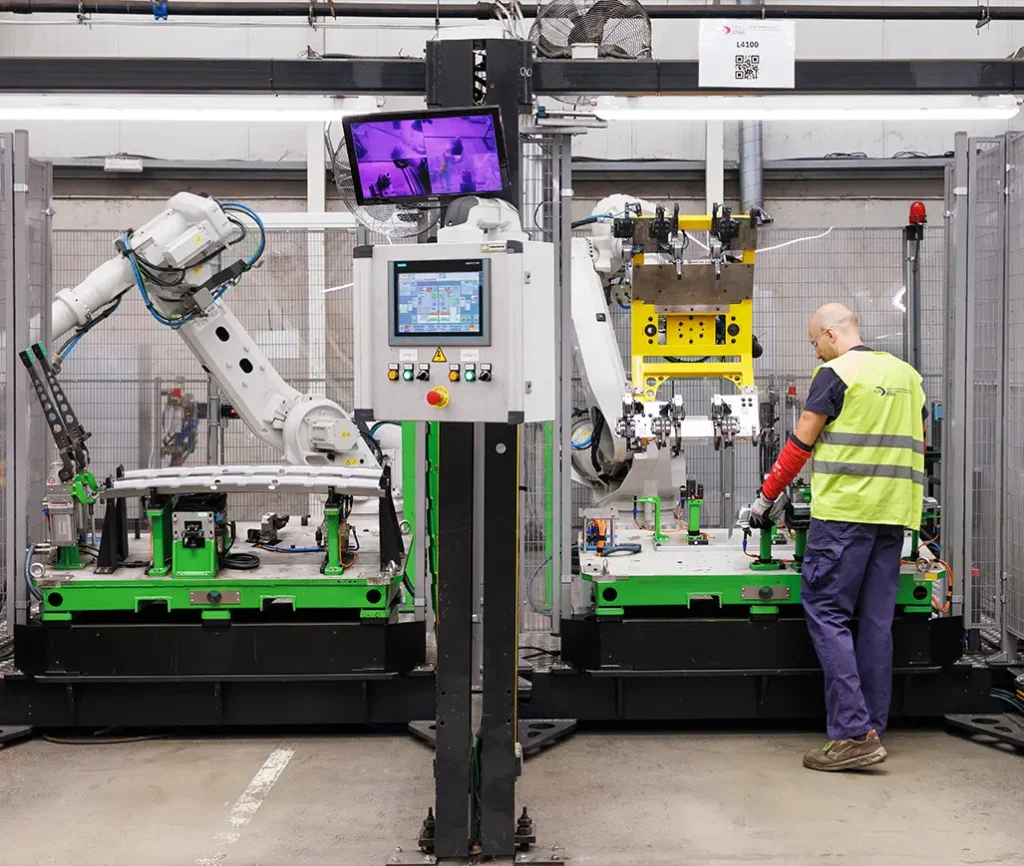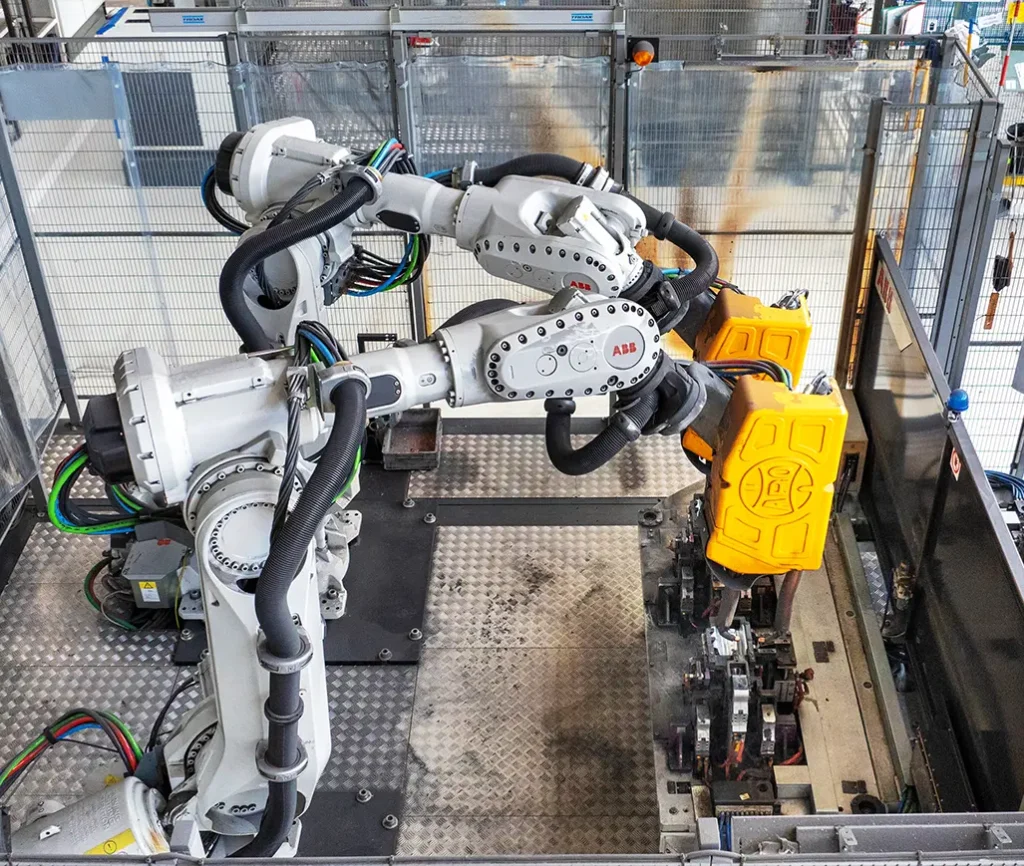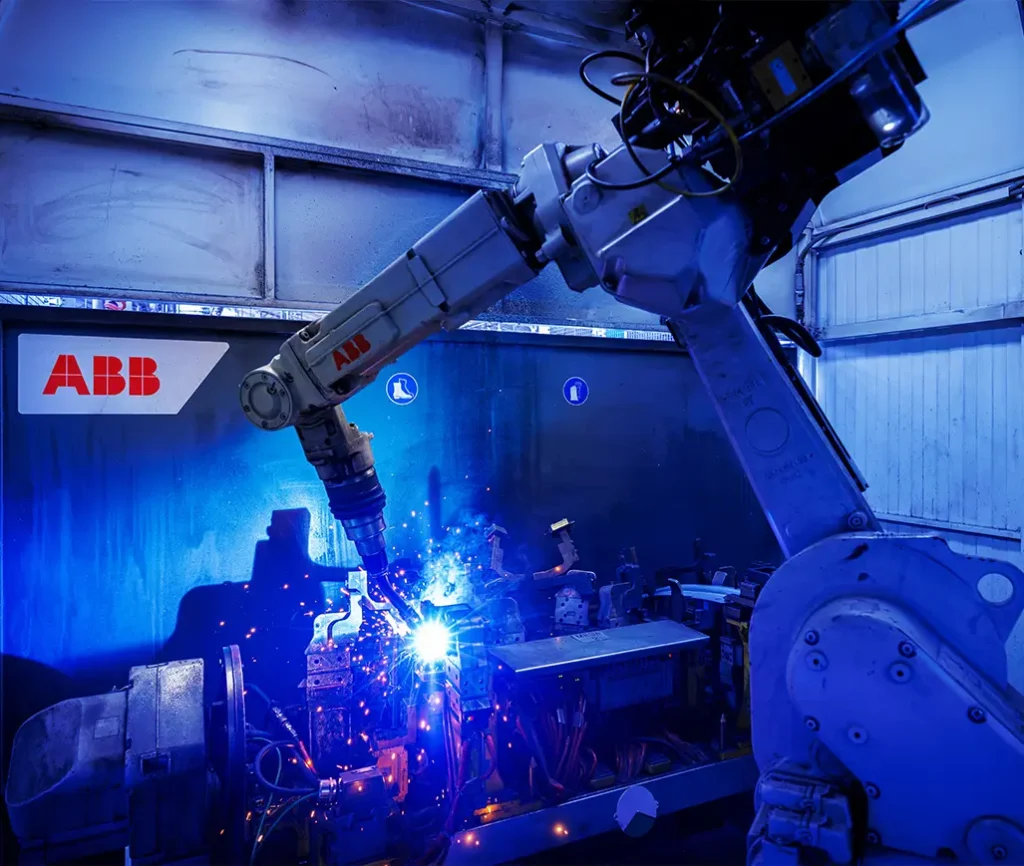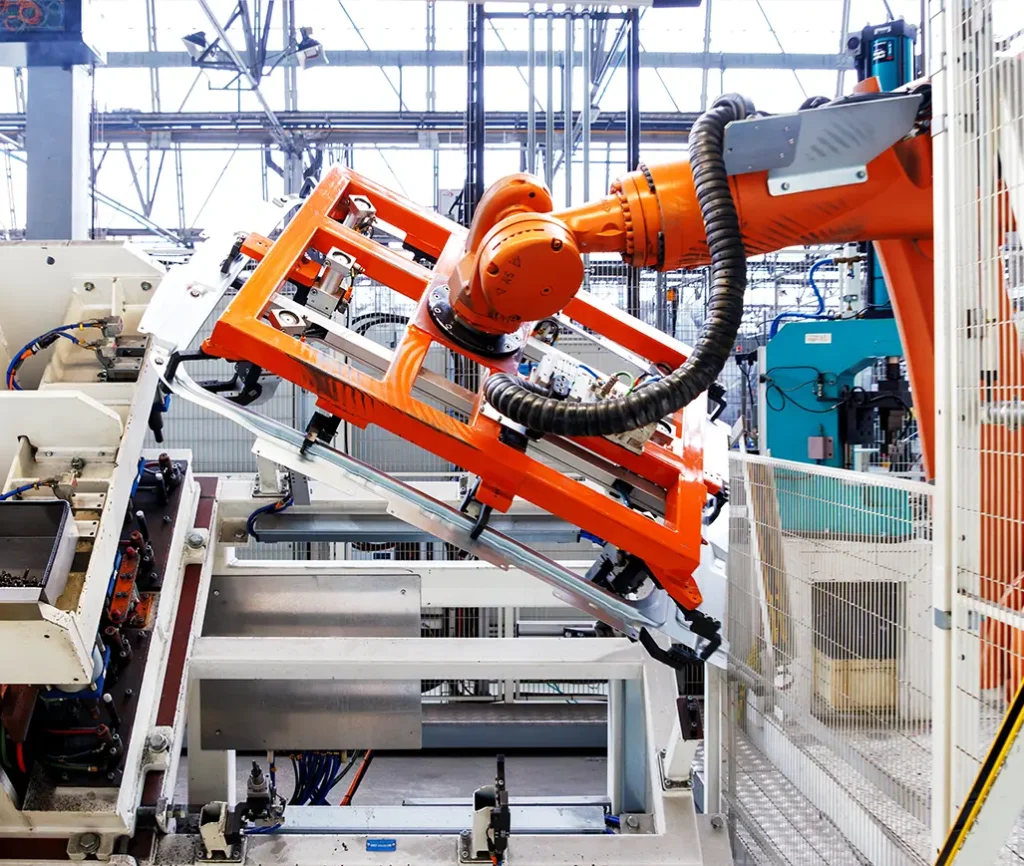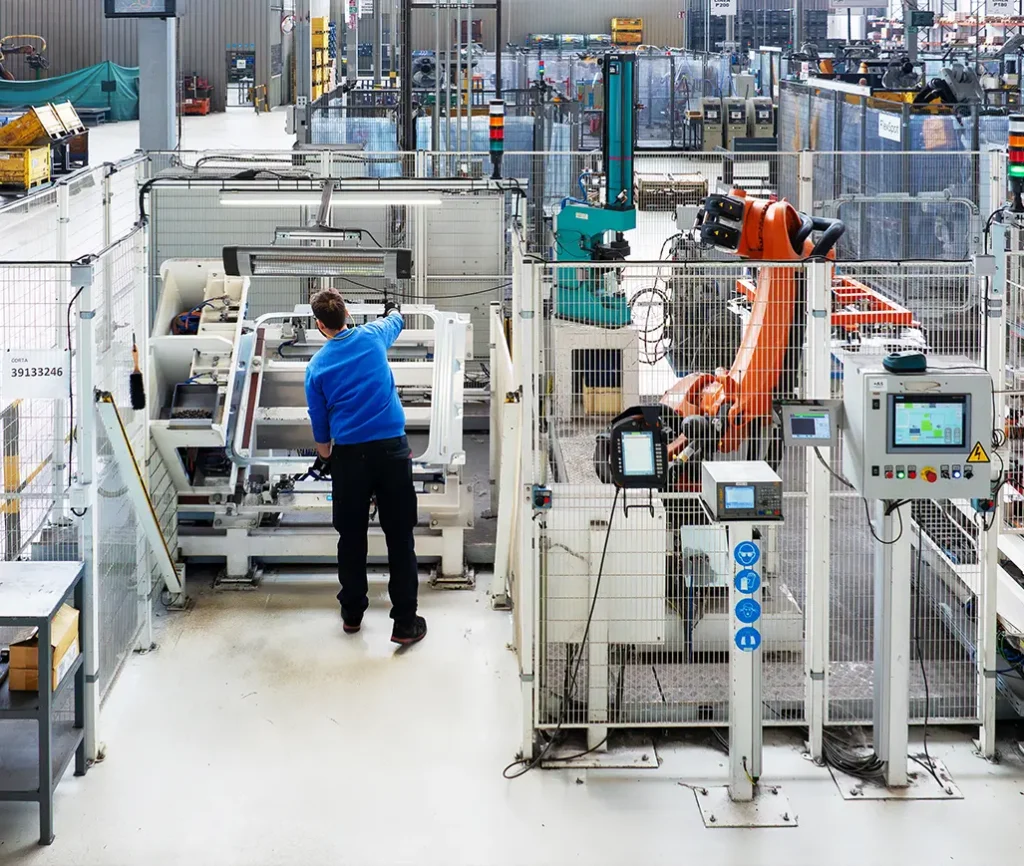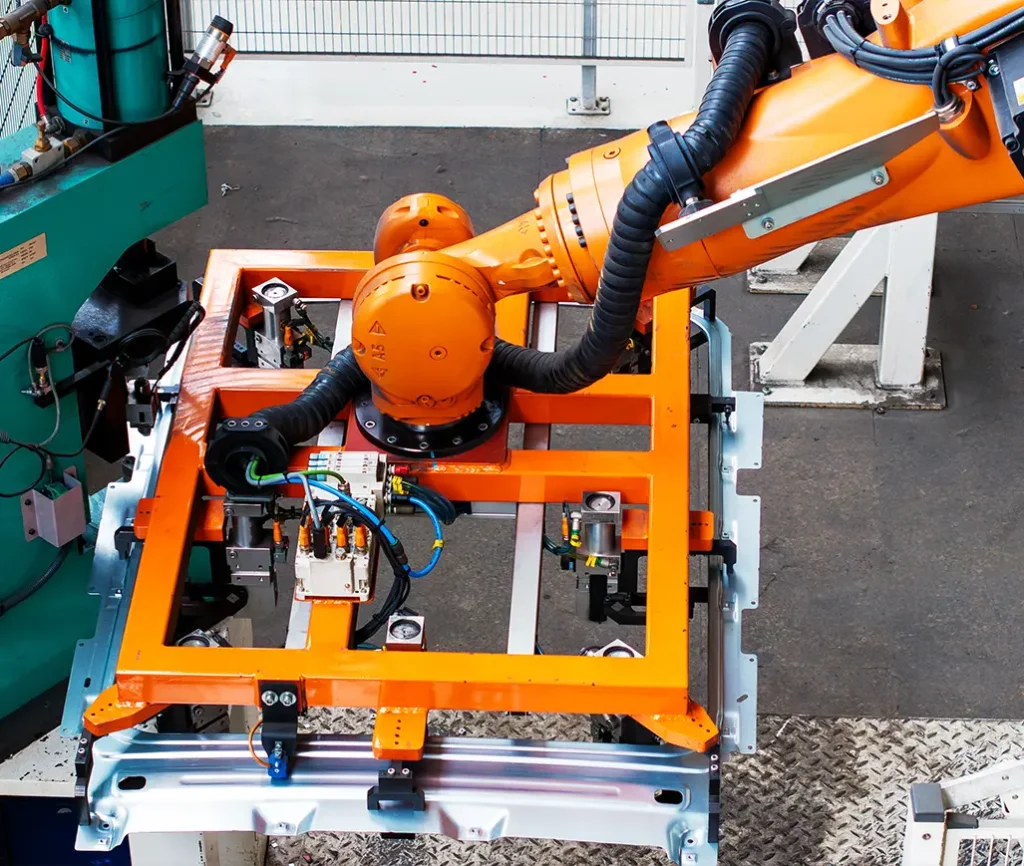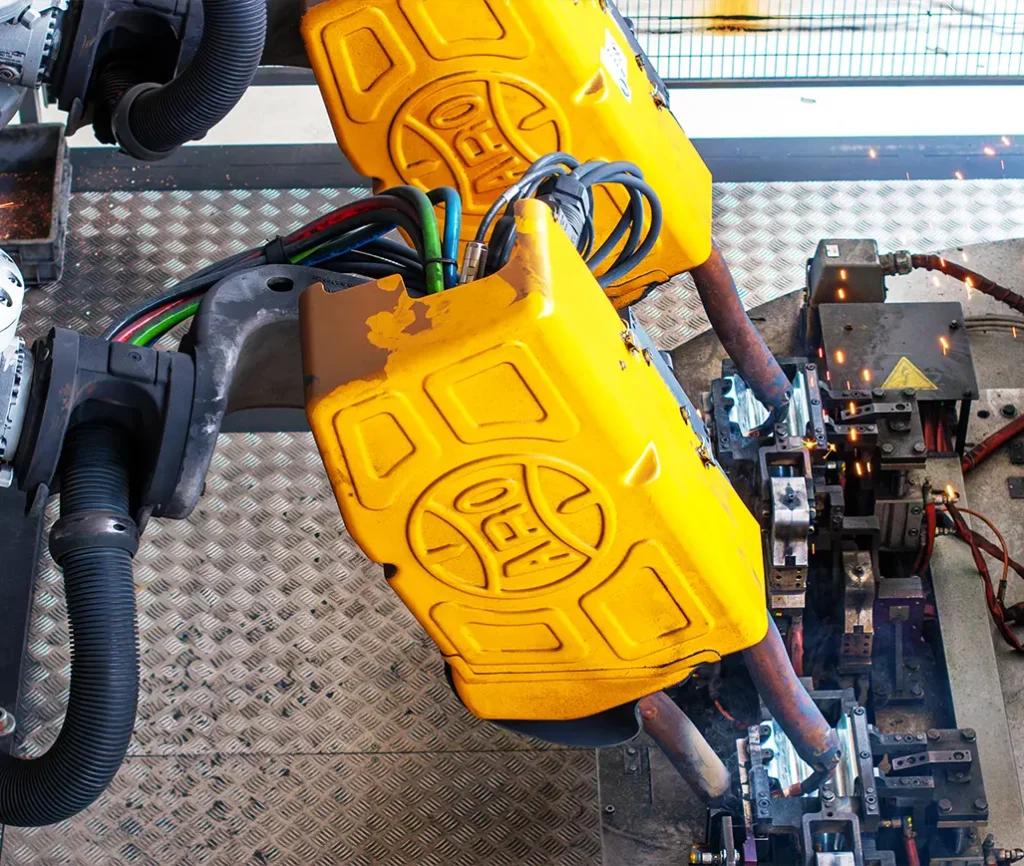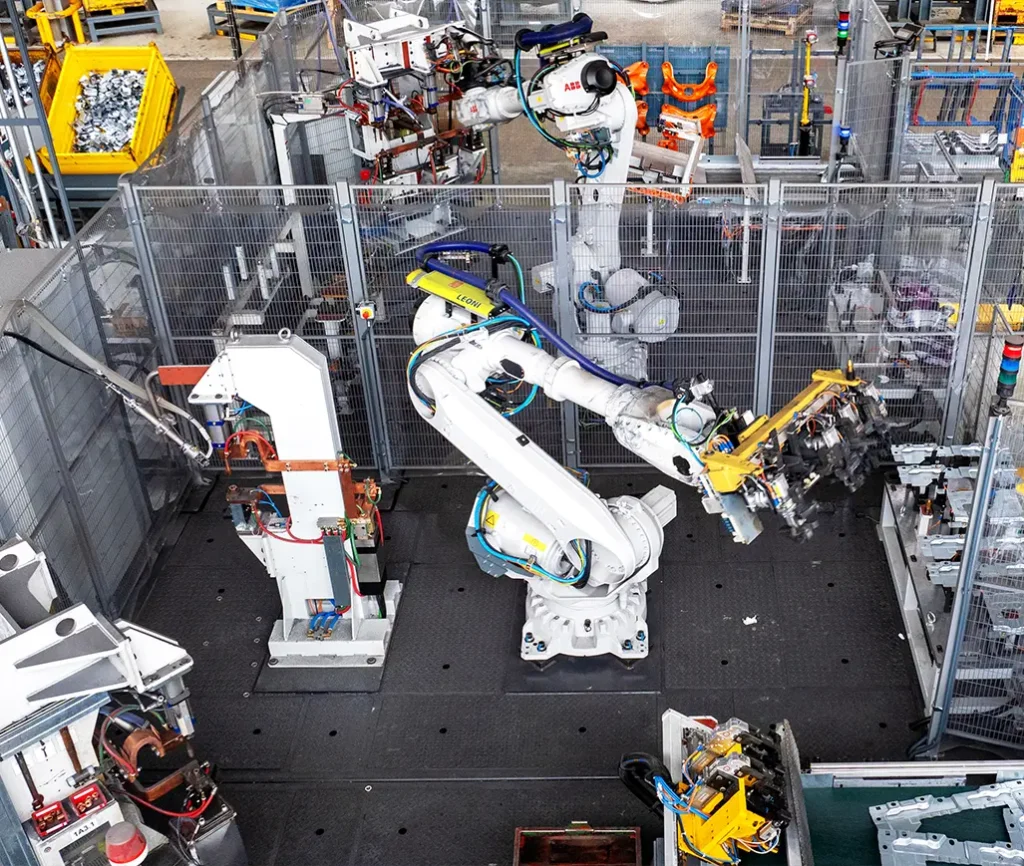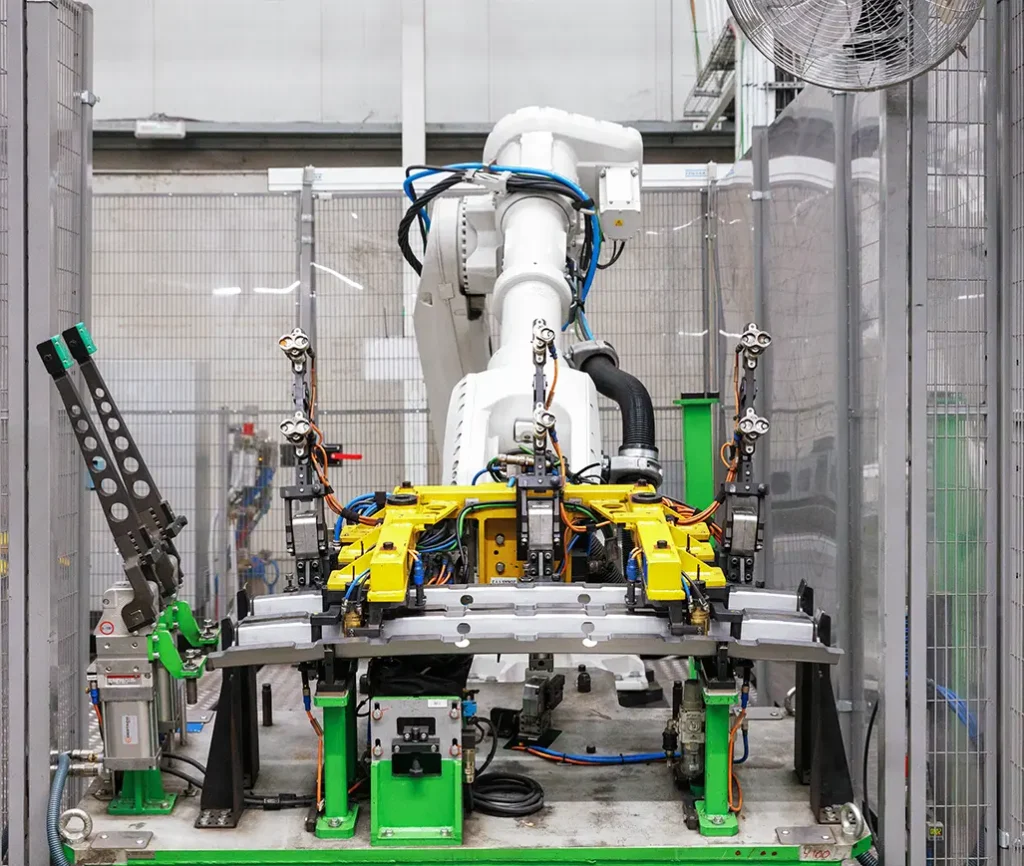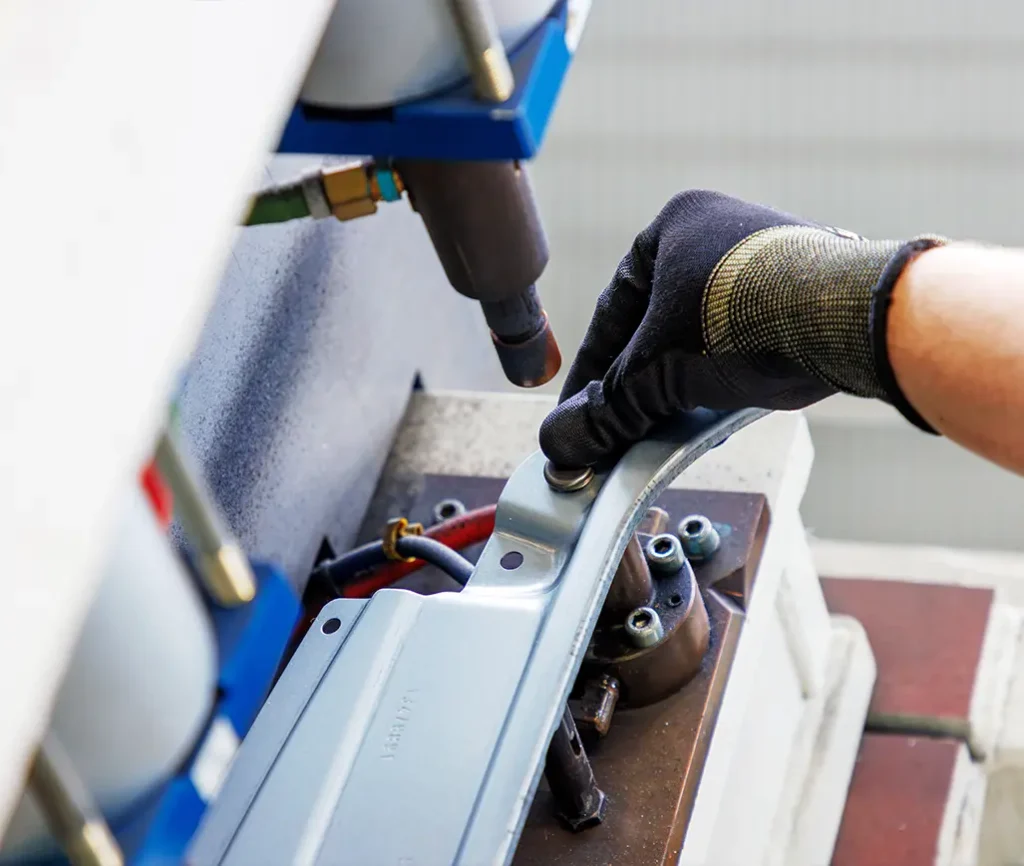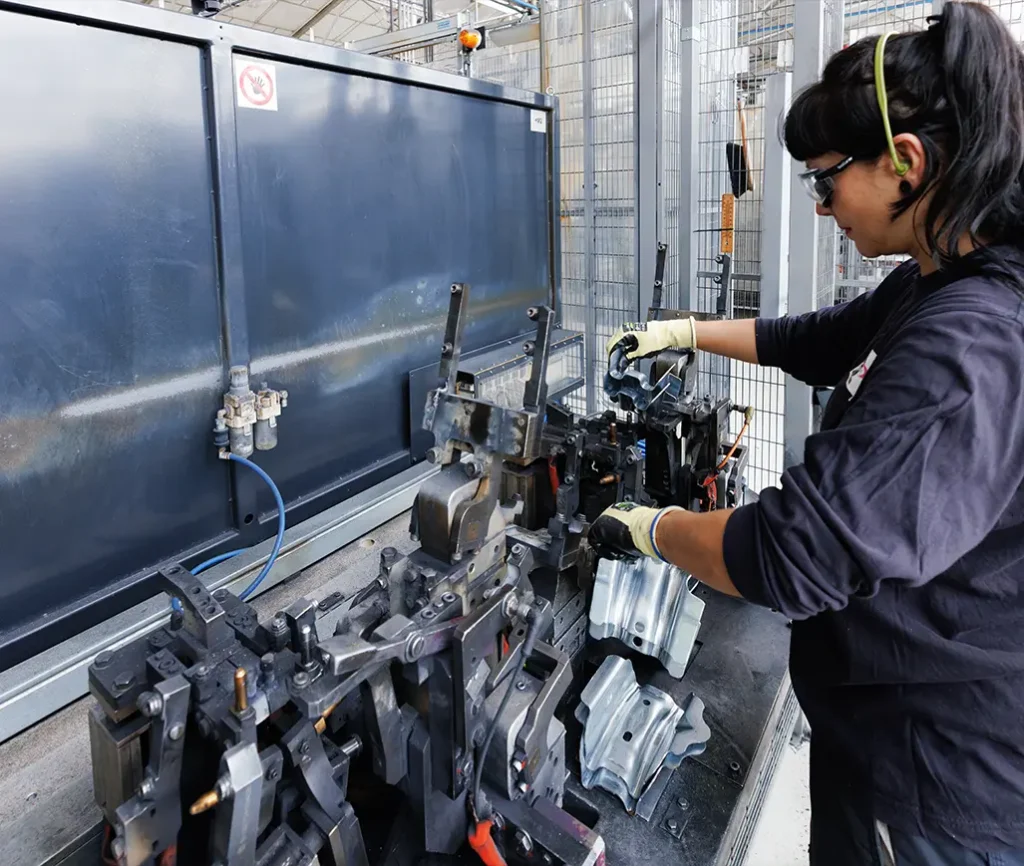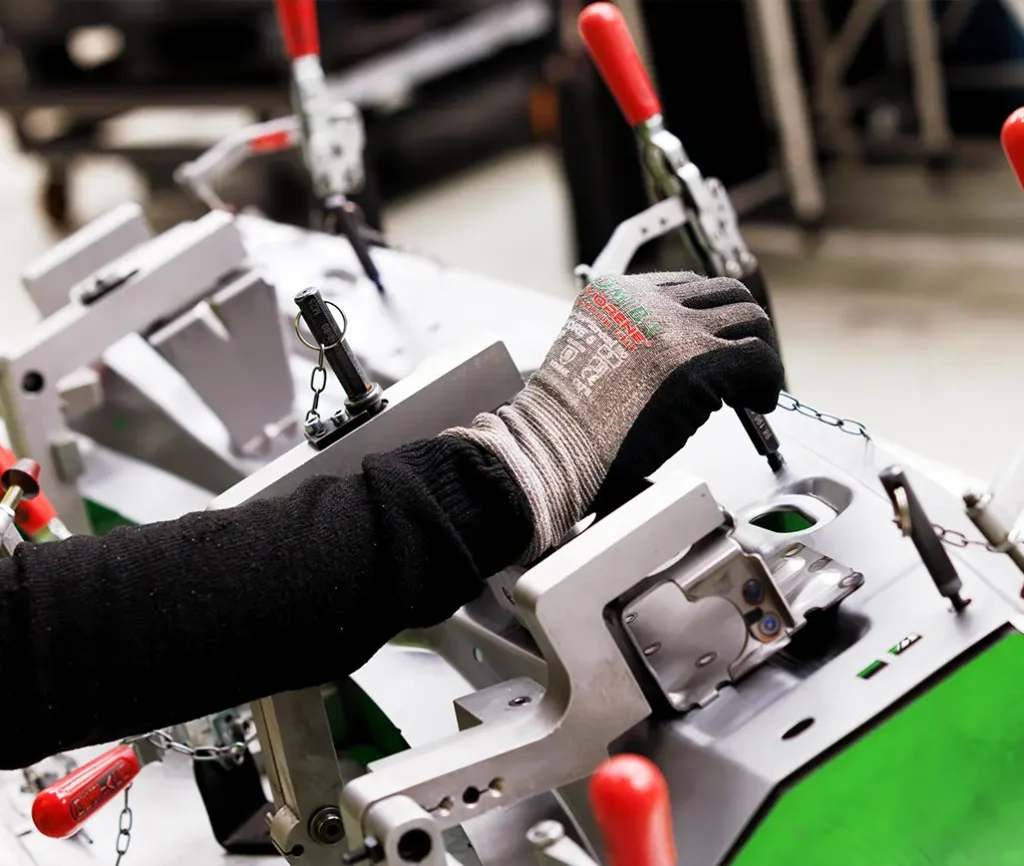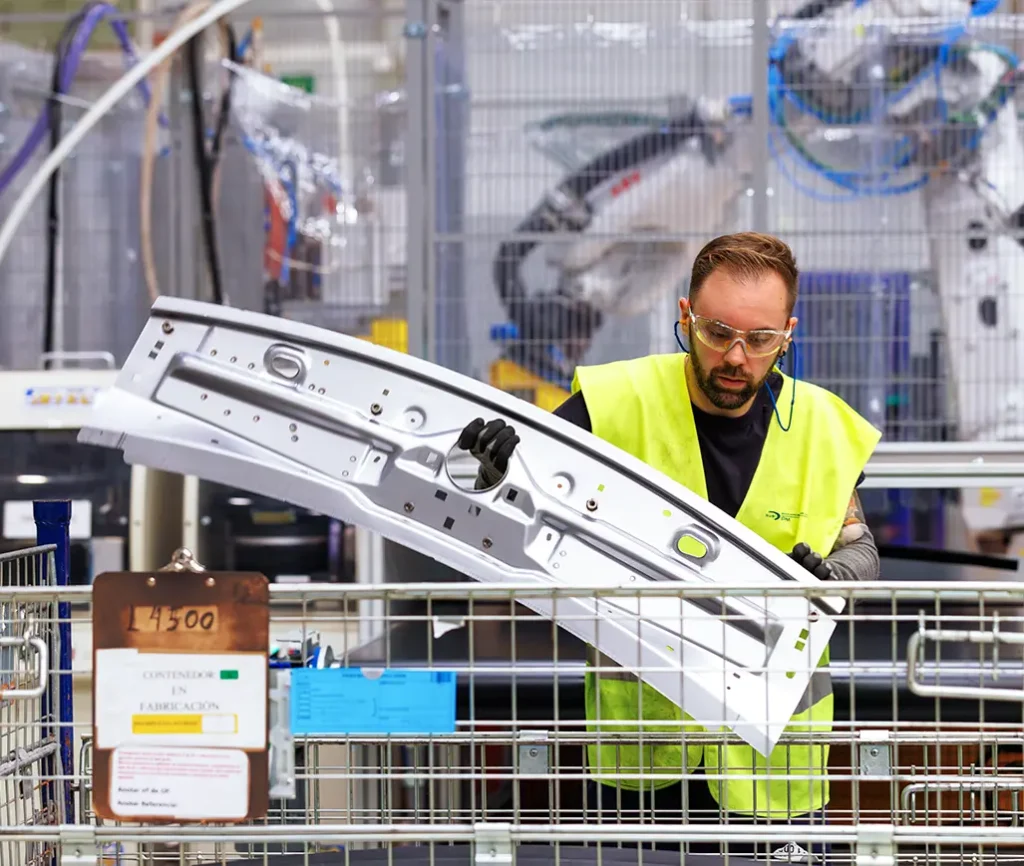Processes:
Welding
Soldering and resistance welding are two key processes in the manufacture of automotive components:
1. Soldering.
Soldering relies on a filler metal added to the joint to form the junction between the base metal parts. It involves applying heat generated by an electric arc between a metal electrode and the parts to be joined. This process creates strong and durable joints, suitable for structures requiring mechanical and electrical strength. It is common in the manufacture of vehicle bodies and chassis, as well as in the repair and maintenance of automotive components.
Need help?
Talk to our specialists
Resistance welding.
It uses electrical resistance and pressure to join metals without fully melting them. Parts are clamped between electrodes and a high-intensity electrical current is applied which generates localised heat, sufficient to form a solid weld on cooling. This method is efficient and fast, ideal for the mass production of chassis panels and structural components.
Both processes play a crucial role in automotive manufacturing. They ensure the joints between metallic materials are strong and reliable, and that the quality and safety standards set by the industry are met.




